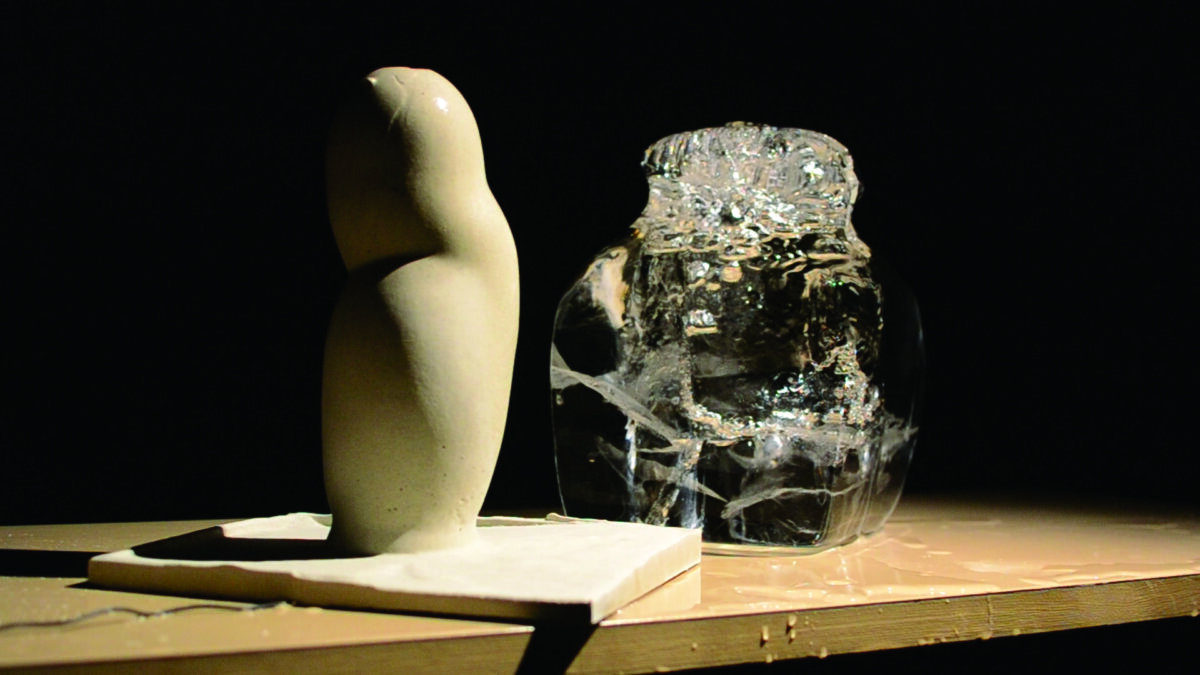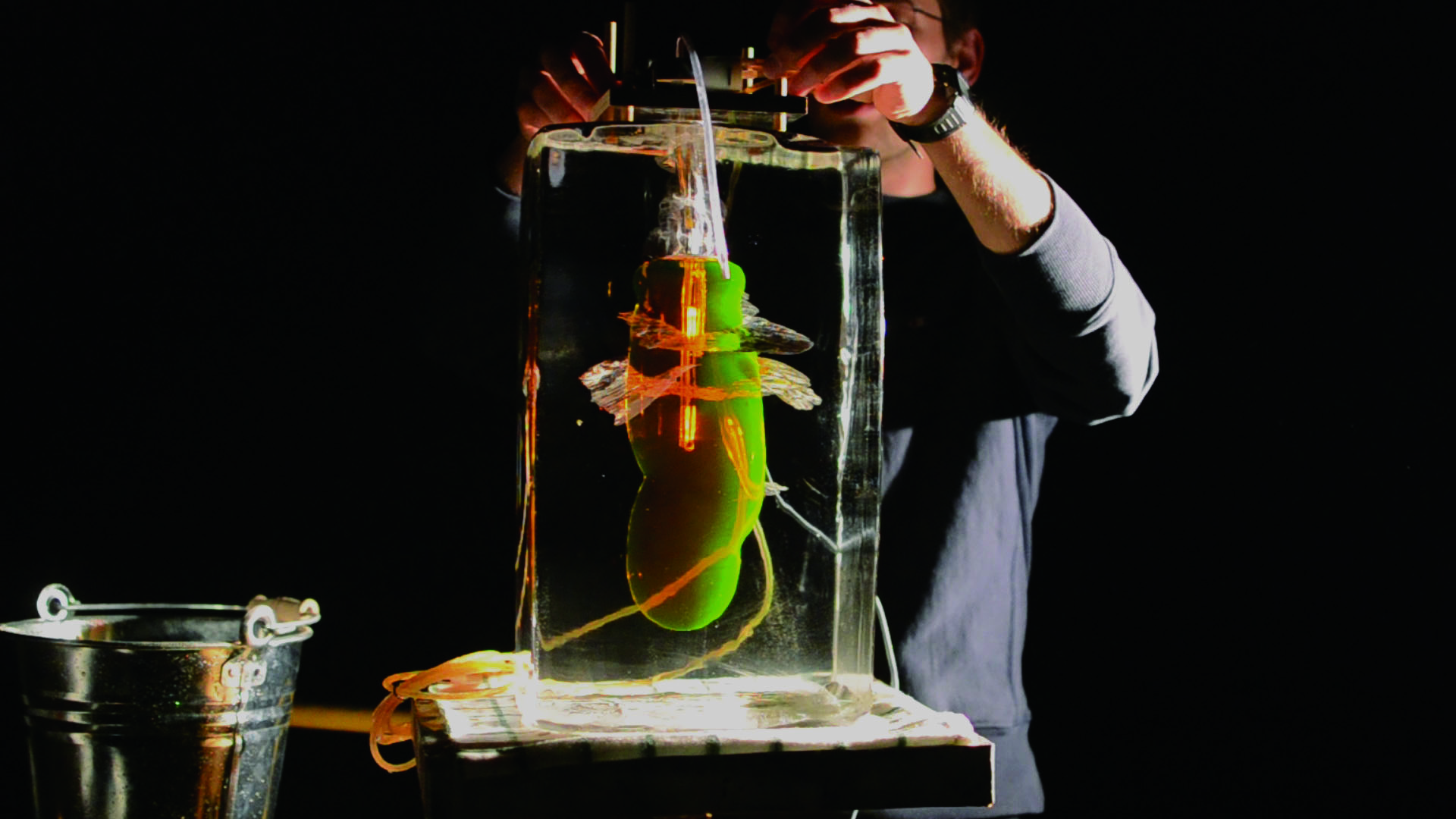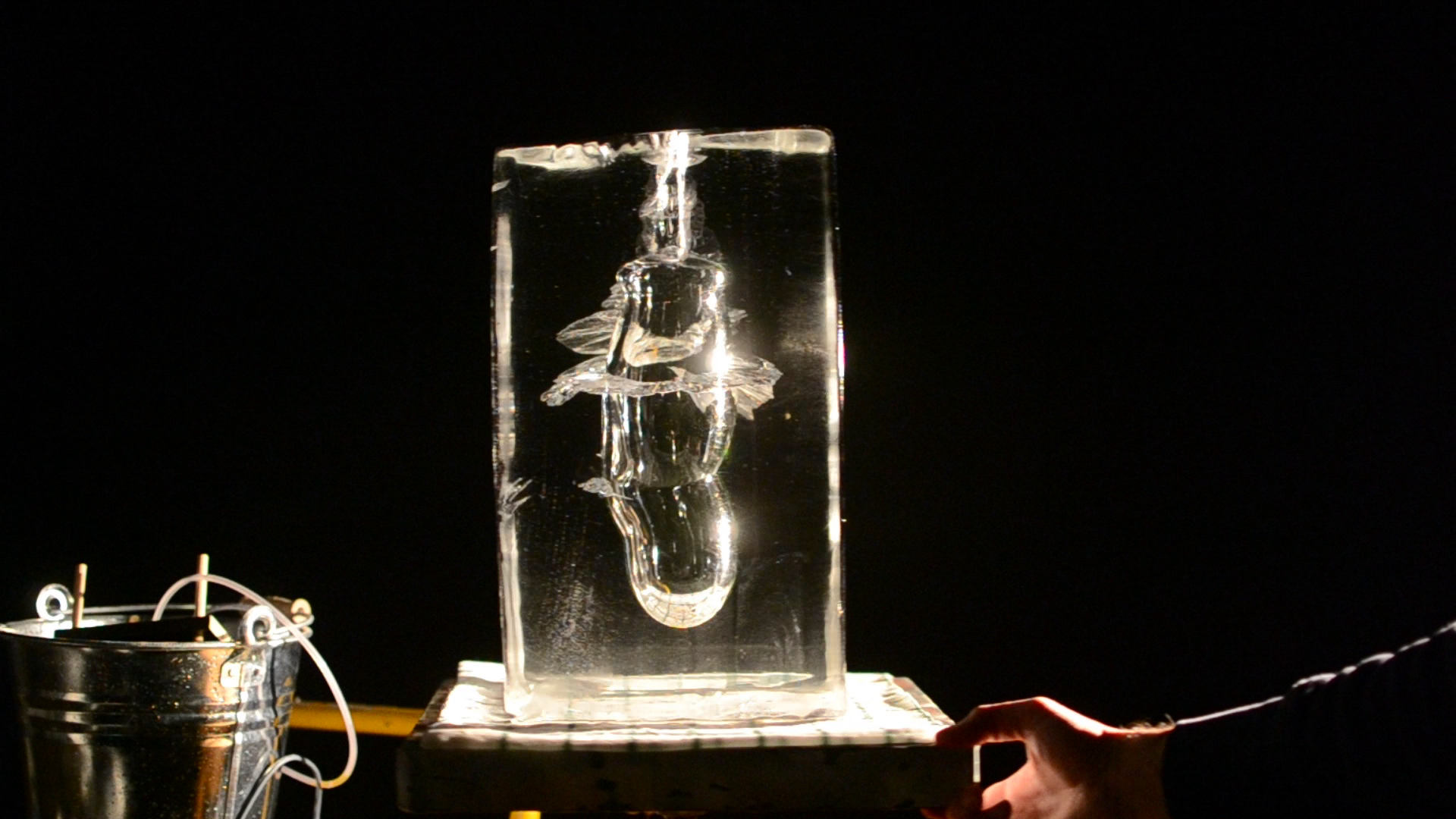#iceformwork – A New Type of Formwork for Ultra-High Performance Concrete

ESR9- SIMULATING CONCRETE FORMWORK
AUTHOR: VASILY SITNIKOV
To increase performance of concrete constructions, concrete industry chooses to reduce the amount of cement in concrete they use. This approach leads to lower mechanical properties of concrete, resulting in thicker floor slabs and massive beams.
An alternative strategy is to increase the share of cement in the total mass, and to use far less of the much stronger concrete, specifically Ultra-High Performance Concrete (UHPC).
While saving up to 70% of the total concrete mass, UHPC is capable carrying constructive loads without any reinforcement.
Here computation of the overall structural geometry becomes important and can be resolved with existing FEA algorithms. The trade-off is the increased formal complexity – the optimized free-form geometry has no efficient method of industrial fabrication. To be integrated in the real-world context, this strategy requires a new method of fabrication of highly complex individual formwork.
Initial experiments have shown that UHPC can successfully harden in sub-freezing temperatures. This provided a ground to think of a method of producing a formwork completely out of ice. Although counter intuitive, it is still obvious that ice has certain properties that are beneficial in relation to casting complex forms in concrete: the use of ice eliminates all mold-related material waste, the demolding does not require manual labor, and finally the mold itself can be produced through incremental melting deformations. In combination with the fact that ice requires relatively small changes in temperature in its own production, the method is potentially sustainable, reading industrial refrigerator as a new type of kiln.




